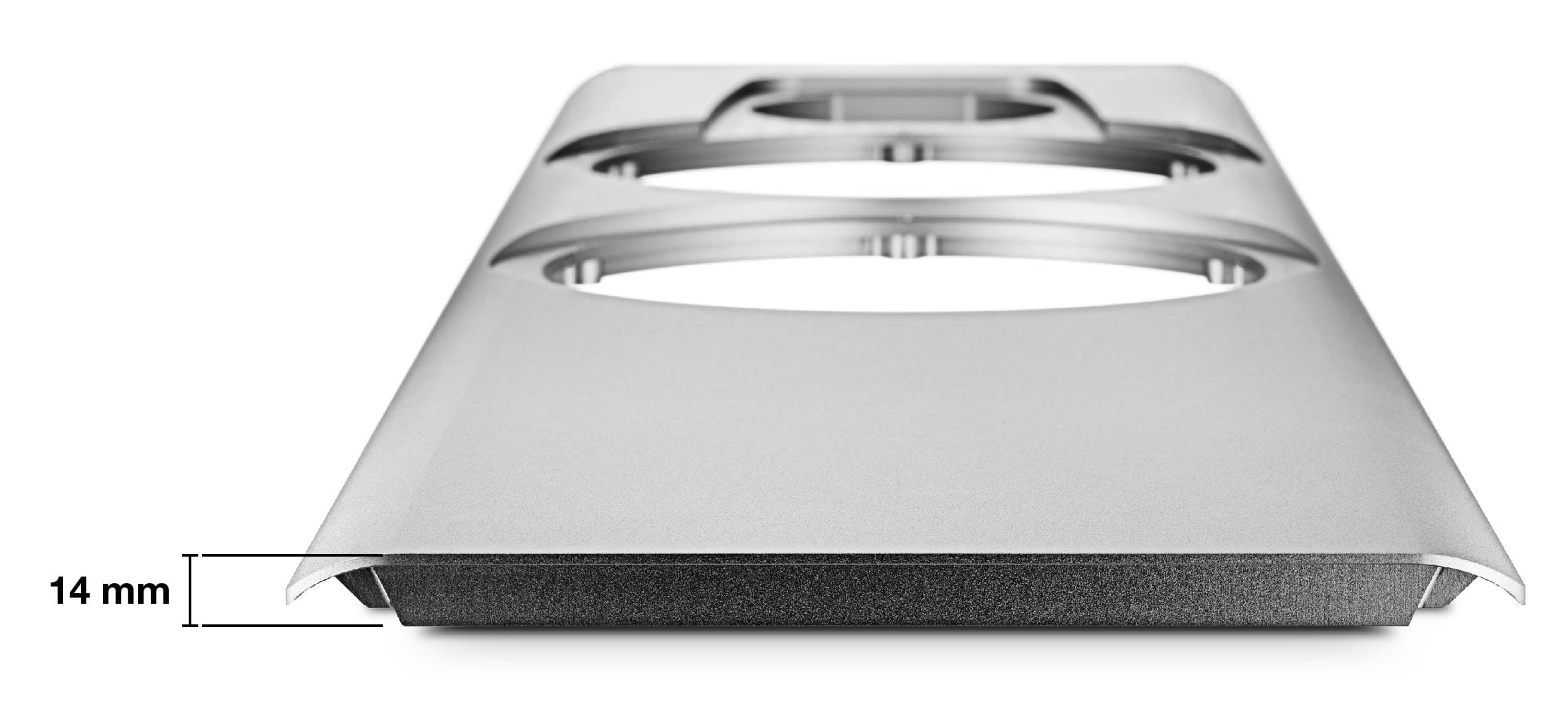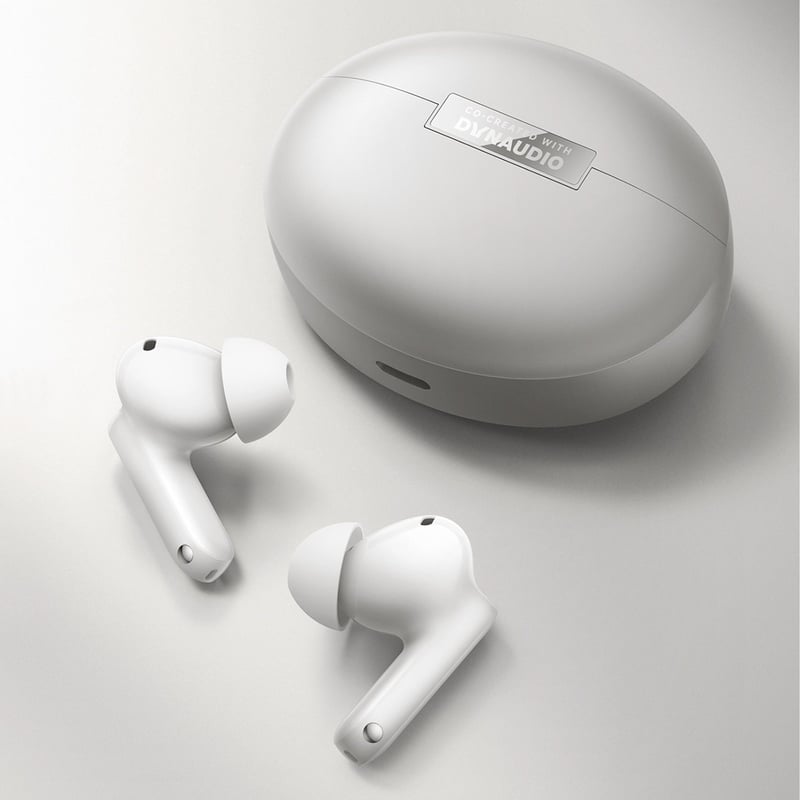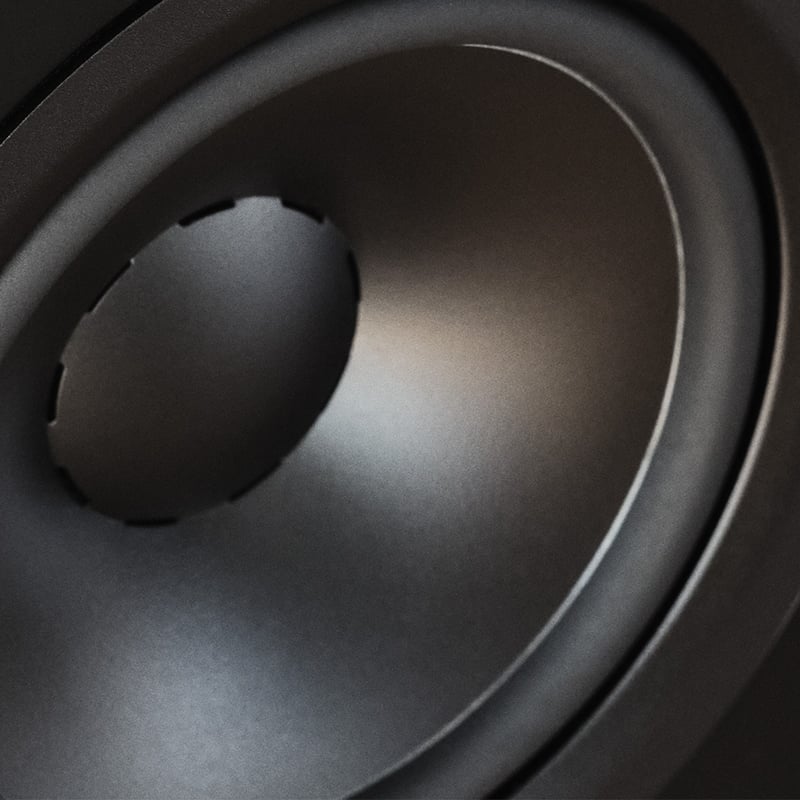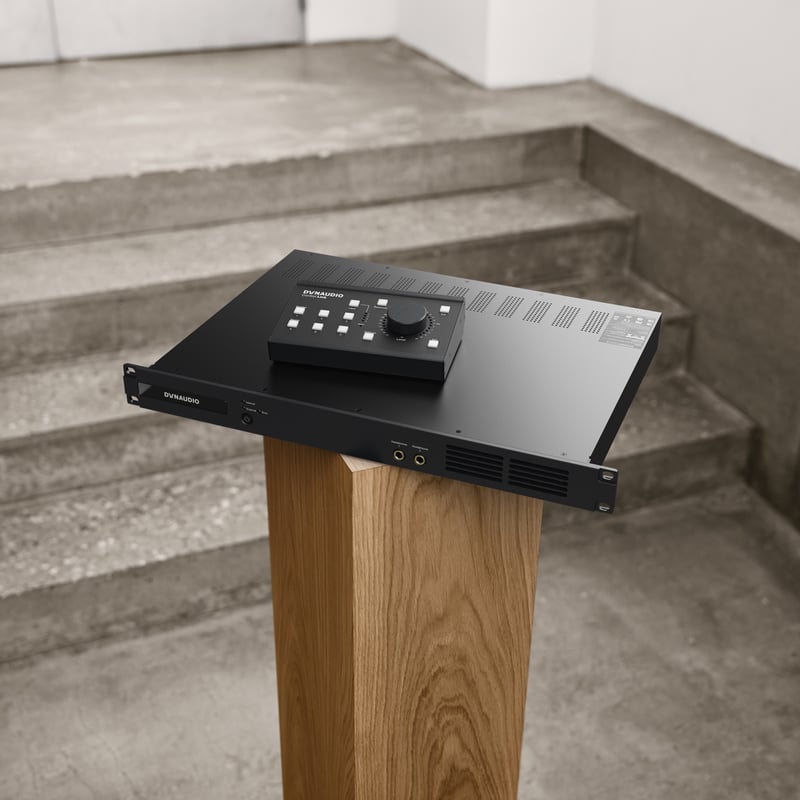Sonic purpose
For Malte Köhn, our Lead Product Designer, it was crucial to create a baffle with serious sonic purpose expressed through our Scandinavia heritage: simplicity, minimalism, and above all, functionalism. These three elements were combined in the 14mm thick, single-piece aluminium baffle: it’s sleek and elegant, but rigid, stable, and extremely well-damped.
The aluminium baffle isn't the only rigid part of a Contour.

The front baffle in aluminium is perfect because the drivers are mounted directly into this firm piece of aluminium that doesn’t vibrate.
Daniel Emonts, Lead Acoustic Engineer
To mount the baffle, we have to carve out 10mm MDF of the cabinet’s front, but don’t worry about its thickness – combined the two are 30mm thick. The sonic benefits are easily spotted: a solid foundation for our newly developed Contour drivers to do their jobs without unwanted vibrations – meaning improved high-volume performance at low frequencies.
The aluminium baffle provides a solid foundation for our brand new drivers.
Also, the curves aren’t simply for show. No, there’s a lot of functionality to be found in the chamfered edges that fit gently with cabinet’s curved edges (our engineers also included the chamfer in the driver’s baskets). Not only does it look great, it helps reduce undesirable high-frequency diffraction effects for clearer treble.
The baffle might look simple, but it truly serves an important purpose – and it is made with usual eye for detail and quality.
With aluminium, we could get curved edges that reduce diffractions – something we really wanted.
Michael Rohde Böwadt, VP of Product Management
Made at extreme pressure
As with our cabinets, everything has to be perfect. To ensure this, we make the baffle from extruded aluminium. But, it isn’t exactly easy to make (so be it; only the best works at Dynaudio).
To start, you have to pre-make steel molds in the desired shape. Now, you have to press large, heavy plates of aluminium through the molds at extremely high pressure. The process leaves you with several meters of aluminium – in the shape you wanted – ready to be cut into the right size. By doing this, we get the best and most consistent finish and quality.
Do you want a closer look at the Contour and its new baffle? Find a dealer near you.
When you have the single piece of aluminium in the right thickness, you are almost there. Now, we need to make it into a Contour baffle by CNC-milling all of its details, holes for mounting it to the cabinet, and so on. The process is finished, the baffle is now ready for assembly with the rest of the cabinet; ready to fulfill its sonic purpose and look outstanding.
Sign up to get more great articles
Nothing compares to the satisfaction of knowing – for a fact – that something is as good as it gets







